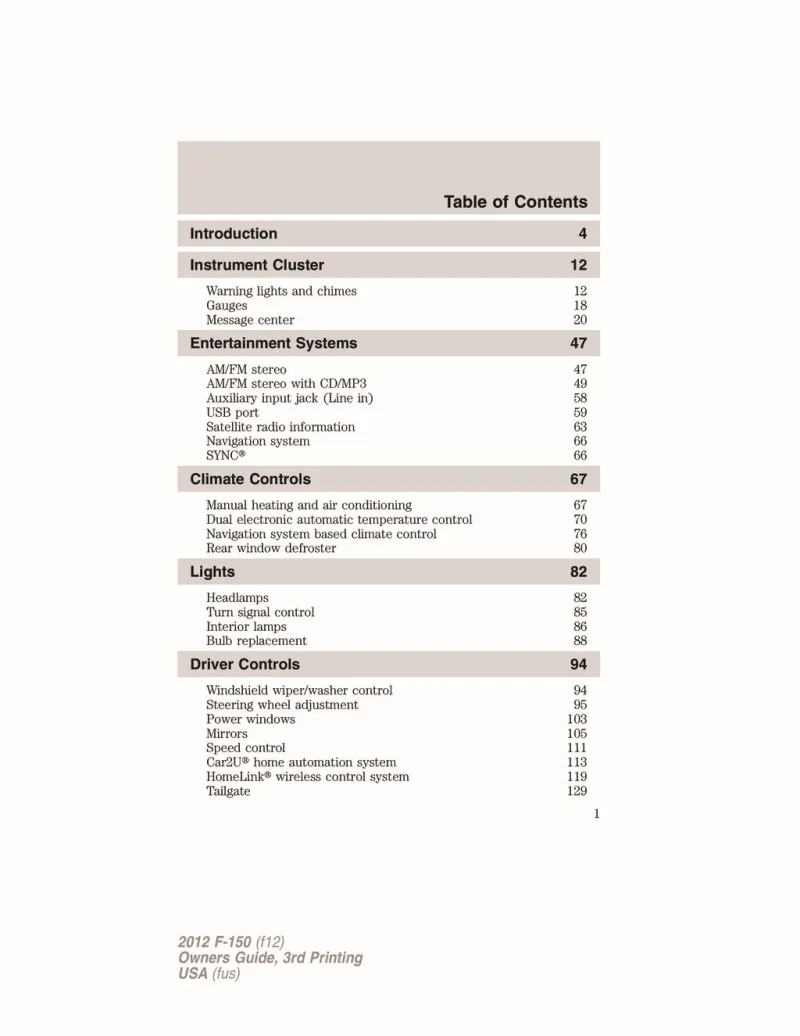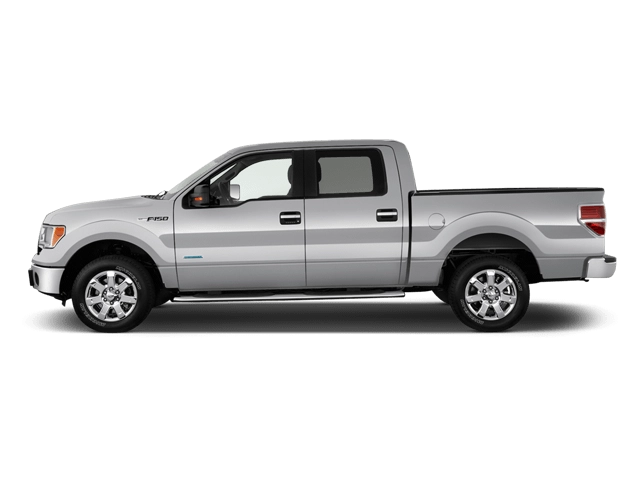2012 Ford F150 Owner's Manual

Table of Contents
2012 Ford F150 Overview
Introduction
Introducing the 2012 Ford F-150, a powerhouse within the competitive pickup truck market. Renowned for its rugged construction and versatile capabilities, the F-150 makes a bold statement on and off the road. Whether you are tackling a tough worksite or cruising urban streets, this model boasts exceptional performance, innovative technology, and a comfortable ride for both driver and passengers.
Powertrains
The 2012 F-150 offers a range of powertrains, ensuring that there's an option for any driver’s needs. The standard 3.7-liter V6 engine delivers 302 horsepower and 278 lb-ft of torque, providing an excellent balance of efficiency and capability. For those seeking more power, the available 5.0-liter V8 generates a robust 360 horsepower, while the 6.2-liter V8, exclusive to the higher trims, produces an impressive 411 horsepower. Each engine is mated to a smooth six-speed automatic transmission, enhancing both performance and fuel economy.
Trims
The 2012 Ford F-150 comes in a variety of trims, catering to different preferences and needs. Ranging from the utilitarian XL to the upscale Lariat and King Ranch, every trim level offers a unique blend of features. The top-tier Platinum and Limited editions elevate luxury with premium materials, advanced technology, and exclusive styling cues, making the F-150 suitable for both work and leisure.
Features
This model is packed with features designed for comfort and utility. Standard equipment includes air conditioning, cruise control, and a four-speaker audio system. Higher trims add leather upholstery, advanced infotainment systems with touchscreen interfaces, Bluetooth connectivity, and optional navigation. The F-150 also offers impressive towing and payload capacities, making it a reliable companion for hauling heavy loads.
Owner's Manual
The 2012 Ford F-150 owner's manual serves as a comprehensive guide for all users. It provides essential information on maintenance, safety features, and troubleshooting, ensuring you get the best performance from your vehicle. The manual is invaluable for understanding the functionality of various technologies and optimizing the truck's capabilities for both work and personal use.
User manual download
The Ford F150 owner manual for the 2012 model year is to be found in PDF downloadable format on this page. The owner manual for the model year 2012 is free and in English, but the repair manuals are usually not easy to get and may cost more.
Manual Questions
Fill the form below and someone will help you!

